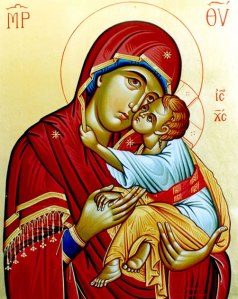Phronema is a Greek term that is used in Orthodox theology to refer to mindset or outlook; it is the Orthodox mind. The attaining of phronema is a matter of practicing the correct faith (orthodoxia) in the correct manner (orthopraxia — Praxis being defined as the overall lifestyle of members of the Orthodox Church.) Attaining phronema is regarded as the first step toward theosis, the state of glorification which is (at least as far as possible in this world) a recovery of the original nature of man made in the image and likeness of God.
Phronema refers to “the completely self-sacrificial trust and faith in religious and ethical truths… from the voice of God…. an unshakeable certainty about the truth of Faith… undiminished and vibrant throughout life, a continually verified daily experience,” “a growing feeling for and understanding of God’s and the practice of Orthodox piety—Orthodox Worship and behavior.” The phronema is vested in tradition “against all heresies and schisms of all times”. The “mind of the Fathers” is also termed phronema as is the “mind of the Church” and “the mind of Christ.” (adapted from OrthodoxWiki.org)
Firstly, we must clarify what ‘phronema’ is, being of course the most central presupposition that defines the position and behavior of the theologian in his particular time. The term ‘phronema’ is of pre-Christian origin, and can be found in a broad range of Greek literature. Continue reading
 : pray for the unity of the faith and the reconciliation of our Churches, pray for our families, pray for the salvation of us sinners, pray for each of us that we may not be brought to trial.
: pray for the unity of the faith and the reconciliation of our Churches, pray for our families, pray for the salvation of us sinners, pray for each of us that we may not be brought to trial.